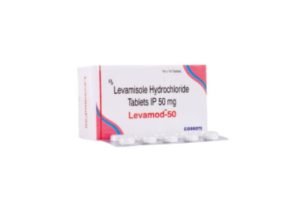
Sulbactam sodium is a beta-lactamase inhibitor that, when combined with beta-lactam antibiotics, extends their spectrum of activity by inhibiting the enzymes that would otherwise degrade these antibiotics. Here’s an overview:
Description:
Sulbactam sodium is a beta-lactamase inhibitor used to enhance the effectiveness of certain antibiotics against bacteria that produce beta-lactamase enzymes. These enzymes can render many beta-lactam antibiotics ineffective. Sulbactam is typically combined with antibiotics like ampicillin or piperacillin.
Brand Names:
- Unasyn (commonly used brand when combined with ampicillin)
- Sulbactam sodium (generic name)
Available Forms & Strengths:
- Injection (IV/IM):
- Sulbactam sodium: Typically available in vials containing 500 mg or 1 g.
Uses:
Sulbactam sodium is primarily used in combination with beta-lactam antibiotics to treat:
- Intra-abdominal Infections: Including peritonitis.
- Skin and Soft Tissue Infections: Particularly those caused by beta-lactamase-producing bacteria.
- Respiratory Tract Infections: Such as pneumonia.
- Urinary Tract Infections: Including those complicated by beta-lactamase-producing organisms.
Side Effects:
- Common:
- Gastrointestinal: Nausea, vomiting, diarrhea.
- Allergic Reactions: Rash, itching, urticaria.
- Less Common:
- Hematologic: Leukopenia, thrombocytopenia, or anemia.
- Renal: Risk of nephrotoxicity, particularly with high doses or pre-existing renal conditions.
- Hepatic: Elevated liver enzymes or liver dysfunction (rare).
- Superinfections: Risk of overgrowth of non-susceptible organisms such as Clostridium difficile.
Dose:
- Adults:
- IV/IM: Typically 1.5 g to 3 g every 6-8 hours, depending on the severity and type of infection. This usually includes a combination with a beta-lactam antibiotic like ampicillin or piperacillin.
- Children:
- IV/IM: Dosing is typically based on weight and the severity of the infection, often 50-100 mg/kg/day divided into multiple doses, in combination with a suitable beta-lactam antibiotic.
Contraindications:
- Hypersensitivity: Known allergy to Sulbactam or other beta-lactamase inhibitors.
- Renal Impairment: Use with caution in patients with renal dysfunction due to the risk of drug accumulation.
Drug Interactions:
- Anticoagulants: May enhance the effects of anticoagulants like warfarin.
- Other Antibiotics: May interact with other antibiotics, potentially affecting efficacy or side effects.
- Methotrexate: Sulbactam may affect renal clearance of methotrexate, increasing the risk of methotrexate toxicity.
Warnings:
- Allergic Reactions: Serious reactions, including anaphylaxis, can occur. Discontinue immediately if severe allergic symptoms develop.
- Renal Monitoring: Regular monitoring of renal function is recommended, especially in patients with pre-existing kidney issues.
- Superinfection Risk: Prolonged use can lead to overgrowth of resistant organisms or fungi.
Special Considerations:
- Pregnancy: Classified as Category B. Generally considered safe during pregnancy, but should be used when clearly needed.
- Breastfeeding: Sulbactam is excreted in breast milk in small amounts. It is usually considered safe for use during breastfeeding, but monitoring for any adverse effects in the infant is advisable.
- Pediatric Use: Used in children, with dosing adjusted based on weight and the type of infection.
Doctor Advised:
- Complete the full course of therapy as prescribed to ensure effectiveness and minimize the risk of resistance.
- Inform your healthcare provider of any history of allergic reactions to beta-lactamase inhibitors or other antibiotics.
- Monitor for side effects, such as gastrointestinal issues or signs of an allergic reaction, and seek medical advice if necessary.
Conclusion:
Sulbactam sodium is an important beta-lactamase inhibitor used to enhance the efficacy of certain antibiotics against beta-lactamase-producing bacteria. It is used in combination with antibiotics like ampicillin or piperacillin to treat various infections. It should be used according to medical advice to prevent resistance and manage potential side effects.







